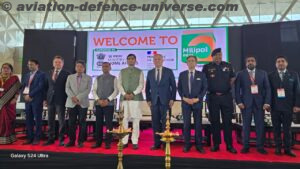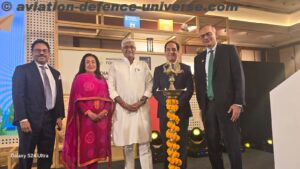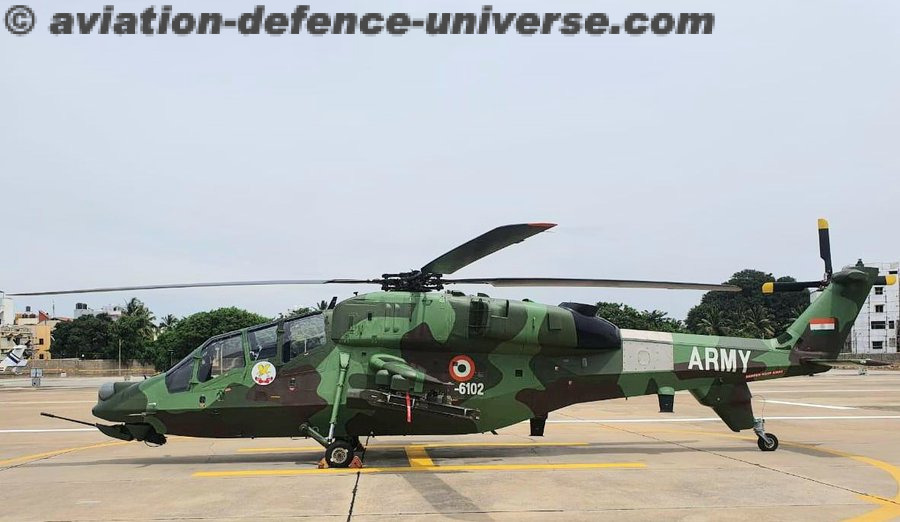

Lt General Balli Pawar (Retd.)
New Delhi. 01 November 2022. Today on 01 November this year the Army Aviation Corps has turned 36 years old, having come into being on this day 1986. However its genesis goes back to the midnight of 14 August 1947 when the assets of the Royal Air Force’s 659 Air Observation Post (Air O P) were equitably divided between India and Pakistan. Both nations got an Air OP Flt each with requisite aircraft and ground support equipment, namely the Tiger Moths and Austers – this marked the birth of the Indian Army’s Aviation Wing with the Flight being named, 1 Independent (I) Air OP Flight. This Flight played a historical but little known role in the drama of the signing of the famous Instrument of Accession by Maharaja Hari Singh of J & K, being involved in the ferrying of important persons and documents to and fro in order to speed up the process. The Flight also has the rear distinction of flying the then Def Minister Shri Baldev Singh and in the evacuation of ‘Naushera ka Sher’ Brig Mohammed Usman’ who was seriously wounded from right under the enemy’s nose in Feb and July 1948 respectively. The Air OP through the 50s and 60s remained a small and elite arm with a strength of only four Flights and one Squadron ironically named the 659 Air OP Squadron on the eve of 1965 operations.
Historical Perspective
The Air OP Units continued to be under the Indian Air Force where the pilots and radio operators were from the Artillery and the maintenance was carried out by the Air Force – these units were also located at Air Forces Stations/Bases though their operational control was with the Army. The basic role of the Air OP was Observation, Reconnaissance and Direction of Artillery Fire, while the other tasks included casualty evacuation, ferrying of Commanders and providing real time information of the battlefield. The Indo-Pak wars of 1965 and 1971 were fields and skies of glory for this tiny band of winged warriors going Unarmed into Battle. In both wars the Air OP won laurels and was heavily decorated with 2 Maha Vir Chakras, 12 Vir Chakras, 4 Vayu Sena Medals and various other awards some of them posthumously.
The late 60s and early 70s saw the replacement of the fixed wing assets with French origin Alouette III helicopters and subsequently its sibling the Lama capable of high altitude operations – these helicopters were rechristened as Chetak and Cheetah. However the newly inducted HAL made Krishak fixed wing aircraft to replace the ageing Auster fleet continued in the Air OP inventory through the 70s. This period also saw an intense debate within the Armed Forces and the Government regarding the need for a separate Aviation Corps for the Army. It is indeed ironical that despite this transition having already taken place in UK and Pakistan, in India the Government continued to dither due to strong reservations by the Air Force for reasons beyond comprehension. Finally in 1986 the Government of the day took the decision and gave directions for the formation of the Army Aviation Corps and accordingly the Corps came into being on 01 Nov 1986. This indeed is a Red Letter day in the history of the erstwhile Air OP, the present day Army Aviation Corps and the Army which finally got its own Air Corps. There were three distinct fallouts of this historical decision. The Corps was no longer the preserve of Artillery officers as pilots for it was now open to all Arms, the aircraft maintenance was to be taken over by the Corps of EME and finally all Aviation Units were to move out of Air Force bases to designated Army Aviation bases – thus began a new chapter in the history of the air component of the Army, the Army Aviation Corps with the Air OP pilots now designated as Army Aviators and Air OP units as Army Aviation Units.
Early Evolution and Challenges
The formation of the Army Aviation Corps was just the beginning of a series of actions needed to build it into a viable arm. The major challenge was to create a cadre of suitably trained personnel to provide technical support for aircraft maintenance, logistics support, air traffic control and meteorology, for this forms the critical hub of aircraft operations. Another herculean task was the creation of Army Aviation Bases and the requisite infrastructure from scratch. The Corps went about these tasks on a war footing wherein the training of technicians was undertaken by the Corps of EME and the logistics issues were handled by the Ordinance Corps. While advanced training of pilots was carried out at Nasik even during the Air OP period, the Army Aviation went on to establish the Combat Army Aviation Training School (CAATS) at Nasik, where it took on both the abnitio and advanced training of pilots and Instructors. It established about 10 Aviation Bases all over India keeping the operational requirements in mind. The Introduction of the Permanent Cadre Concept was a big boost for the Corps for it would provide continuity and stability which is a key requirement for an Air Arm. It is to the credit of this fledgling arm that it was able to overcome all the above challenges in the years ahead and today is the youngest fighting arm of the Army with an apt motto ‘Swift and Sure’.
On the operational front the Aviation Corps has been the life line of troops deployed on the highest battlefield of the world, the Siachen Glacier operating at 20000 feet and above in extremely challenging conditions since the inception of Operation Meghdoot in 1984 – the Corps continues to operate there despite its ageing and vintage Cheetah helicopter fleet. The Army Aviation Corps was in the forefront during both Operation Pawan in Sri Lanka in 1987 and Operation Vijay during the Kargill conflict in 1999. Operation Pawan was a crucial test for the newly formed Corps as it was true baptism by fire, where as Kargil is a clear example of guts and glory where a small band of professionals in their tiny flying machines could influence the course of battle so significantly. In addition Army Aviation has been a Force Multiplier in Counter Insurgency and Counter Terrorism operations both by day and night in the North East and J & K. It also has the distinction of providing a Flight strength with helicopters in UN Missions in Somalia and Democratic Republic of Congo and has acquitted itself with elan.
It was therefore in apt recognition and acknowledgement of the meritorious service rendered by the youngest Corps of the Army both during war and peace, that the prestigious ‘Presidents Colours, were conferred on the Army Aviation Corps on 10 Oct 2019 at a befitting ceremony at Nasik Aviation Base.
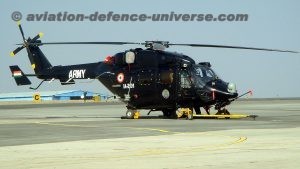
Army Aviation Growth and Modernisation – Present Status
Positive Developments. With three Aviation Brigades, the Army Aviation Corps boasts of an inventory of approximately 380 helicopters of all types namely the Chetak, Cheetah, Advanced Light Helicopter (ALH), Rudra (Armed ALH) and the latest entrant this year, the Light Combat Helicopter (LCH). It presently operates around 150 indigenous ALHs, 76 of which are the Rudra with another 30 to 40 ALHs in the Utility role likely to be inducted in the coming two to three years – it already is and will remain the largest operator of this class of helicopters. These helicopters are capable of operating by day and night in the plains and in high altitude regions and are currently deployed in Eastern Ladakh. The raising of the first LCH Unit in June this year is a very significant development as the LCH capability to operate at very high altitudes far surpasses that of the Apache and the Rudra the armed ALH. Under the limited series production four have already been inducted and fifth LCH is likely by next month. This will certainly be a force multiplier in high altitude operations and will greatly enhance the combat potential in Eastern Ladakh. The six Apaches approved for the Army are likely to be inducted in 2024 which will further enhance the combat power of the Army Aviation Corps. However on the flip side there are some capability gaps in the weaponisation of both the Rudra and LCH. The typical weapons package approved for both the Rudra and the LCH includes a Gatling gun, rockets, air to air missiles (French ‘MISTRAL’) and air to ground missiles (ATGM), along with a modern sighting system and integrated electronic warfare self protection suite. In its present configuration both the Rudra and LCH have not been integrated with a suitable ATGM, as the air version of Nag ATGM ’HELINA’, being developed by the Defence Research and Development Organisation (DRDO) is not yet fully ready. The recent trials this year though a relative success, the system is yet to meet the minimum requirement of the Army which was set in 2008. The non availability of a suitable airborne ATGM not only greatly impacts the operational capability of the Rudra but also the LCH which is currently in the process of being inducted into the forces. The ATGM is the main weapon system of an armed/attack helicopter and without it the helicopter merely remains a gunship, inhibiting exploitation of its full potential. What is more shocking is that these helicopters also do not have the MISTRAL air to air missiles as their import is stuck in some bureaucratic pricing muddle for the last six years. This is an area of grave concern and needs to be addressed on priority by all stake holders concerned. Another path breaking development has been the takeover of the command and control of UAVs by the Army Aviation in August last year. This is a major challenge for the Corps as their integration will require major organisational restructuring. This is an asset which will play a very critical role in future conflicts as can be seen in the Ukraine war.
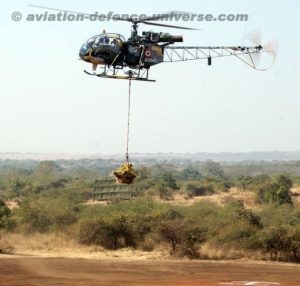 Cheetah/Chetak Replacement Saga. While the Corps has seen a distinct progress in some areas especially related to the combat potential and light utility capability, major critical gaps in the crucial area of reconnaissance and surveillance continue to haunt the Corps today. In fact over the last couple of years the Armed Forces and the Army in particular have raised the alarm with the Ministry of Defence on the issue of the fast emerging critical operational voids in the virtually obsolete Cheetah and Chetak class of helicopters, due to their reaching the end of their ‘Total Technical Life’ by the end of the year 2023 and the urgent need to fast-track their replacement – France the country of original equipment manufacturer of Aloutte-III and Lama (Cheetah &Chetak in India) has already displayed these helicopters in Museums. The reality is that the Army Aviation, the largest operator of this class of helicopters with almost 200 platforms, continues to fly this outdated, vintage and accident prone fleet, which also keeps falling out of the skies on a regular basis, exacting a heavy toll in terms of men and material – two fatal Cheetah crashes have already taken place this year and have sent warning signals which need to be acted upon earliest. The sustainability and maintainability of this aging fleet is itself becoming well nigh impossible which is a serious issue and major cause of concern today, severely impacting the Operational Preparedness of the Indian Army.
Cheetah/Chetak Replacement Saga. While the Corps has seen a distinct progress in some areas especially related to the combat potential and light utility capability, major critical gaps in the crucial area of reconnaissance and surveillance continue to haunt the Corps today. In fact over the last couple of years the Armed Forces and the Army in particular have raised the alarm with the Ministry of Defence on the issue of the fast emerging critical operational voids in the virtually obsolete Cheetah and Chetak class of helicopters, due to their reaching the end of their ‘Total Technical Life’ by the end of the year 2023 and the urgent need to fast-track their replacement – France the country of original equipment manufacturer of Aloutte-III and Lama (Cheetah &Chetak in India) has already displayed these helicopters in Museums. The reality is that the Army Aviation, the largest operator of this class of helicopters with almost 200 platforms, continues to fly this outdated, vintage and accident prone fleet, which also keeps falling out of the skies on a regular basis, exacting a heavy toll in terms of men and material – two fatal Cheetah crashes have already taken place this year and have sent warning signals which need to be acted upon earliest. The sustainability and maintainability of this aging fleet is itself becoming well nigh impossible which is a serious issue and major cause of concern today, severely impacting the Operational Preparedness of the Indian Army.
These helicopters were inducted in the late sixties and seventies and are not only no longer fit for flying, but are plagued by a high crash rate and huge serviceability problems, resulting in loss of precious lives and equipment. This emerging operational void becomes even more significant due to the ongoing military confrontation with China in Eastern Ladakh, an area where the Cheetah helicopter is playing a critical role. Add to this the fact that the Cheetah helicopter is the lifeline of troops deployed in Siachen Glacier, the gravity of the current situation becomes crystal clear. The Cheetal helicopter ( upgraded version of Cheetah by HAL) being inducted in both Army and Air force in limited numbers ( 30 x Army and 10 x Air force ) does not in any way mitigate the current grim situation – this could at best be treated as fire fighting measure. The replacement Project of 200 Russian Ka-226T helicopters is as good as dead especially in view of Western sanctions on Russia due to the Ukraine war which has also impacted the Ka-226T helicopter due to the French engine being fitted on it.
The other replacement project is HAL’s indigenously developed Light Utility Helicopter (LUH) which recently demonstrated its high altitude capability in Ladakh and Siachen areas. The LUH is a single engine, state of art, modern day helicopter in the 3 Ton class. As per HAL the LUH was to go into production this year at the HALs newly built helicopter complex at Tumkur, Karnataka but so far there is no news on the same. The plan is to manufacture 184 LUH with Army to get 123 and Air force 61 helicopters. Even if the HAL manages to produce 20 LUHs per year, it will only partially address the requirements of the Army Aviation with the stark reality that Chetaks and Cheetahs will continue to operate with the Corps for the next 10 years, a nightmarish prospect in itself.
Conclusion
While there has been a major boost to the Lift and Attack capability with the induction of the ALH, Rudra and LCH helicopters greatly enhancing the Combat Potential of the Army Aviation Corps, its Reconnaissance and Surveillance capabilities have seen a sharp degradation due to the non replacement of the obsolete and ageing Cheetah/Chetak fleet – this remains the biggest challenge for the Corps in the coming years. This is a critical operational void which has serious security implications and becomes all the more discerning due to the ongoing military confrontation with China in Eastern Ladakh, which is not likely to end anytime soon. The LUH seems currently to be the only hope on the horizon, but it is still a few years away, leaving the Army Aviation saddled with the non maintainable and accident prone fleet of Cheetah/Chetak helicopters. The numbers required for replacement are large and HAL will need to ramp up its production capacity in order to replace the Cheetah/Chetak fleet in the shortest possible timeframe. However, it is easier said than done as HAL already has its hands full with two important and crucial helicopter projects, the LUH and the LCH which will require their unstinted support and attention, in order to ensure their success, through proper quality control during the manufacturing process. To mitigate this grave situation to some extent the Government and the Army could look at inducting additional ALHs to replace the Chetaks which can only operate in the plains. This replacement could happen over the next 5-6 years provided the HAL can ramp up production of the additional requirements while meeting its existing commitments.
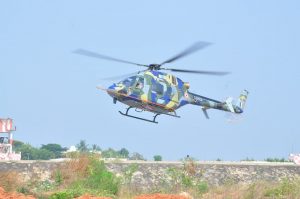 This young Corps has also been entrusted with another major responsibility of the Command and Control of UAVs in the Army’s inventory. Their training and operationalisation is a major challenge ahead for the Army Aviation Corps – there is already talk of a separate wing in the Corps to look after UAV operations. Simultaneously induction and integration of new state of art and modern platforms like the LUH, LCH and the Apache will need leadership and commitment of the highest order. Today at 75 years the Air Arm of the Army stands as a hallmark of professionalism, sacrifice, courage and above all selfless commitment. There is no doubt that the Army Aviation Corps will overcome all challenges in the years ahead and truly live up to its status as the Arm of the Future.
This young Corps has also been entrusted with another major responsibility of the Command and Control of UAVs in the Army’s inventory. Their training and operationalisation is a major challenge ahead for the Army Aviation Corps – there is already talk of a separate wing in the Corps to look after UAV operations. Simultaneously induction and integration of new state of art and modern platforms like the LUH, LCH and the Apache will need leadership and commitment of the highest order. Today at 75 years the Air Arm of the Army stands as a hallmark of professionalism, sacrifice, courage and above all selfless commitment. There is no doubt that the Army Aviation Corps will overcome all challenges in the years ahead and truly live up to its status as the Arm of the Future.
(Lt Gen BS Pawar is a Delhi based defence analyst, former Head of the Army Aviation Corps and Commandant School of Artillery. The views in the article are solely the author’s. He can be contacted at editor.adu@gmail.com.)






































